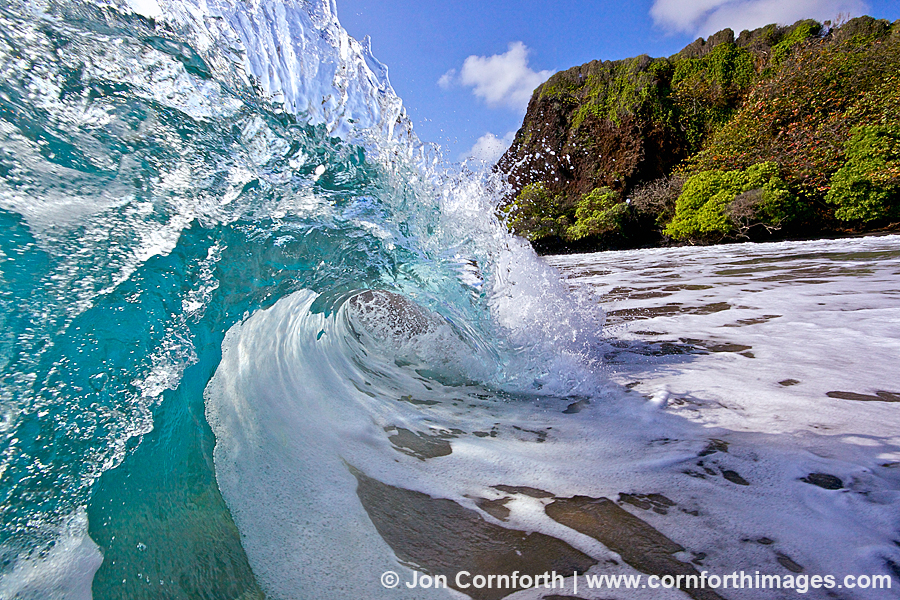
Hamoa Beach Shorebreak 1
Posted onLike most photographers, I like to challenge myself to create new images outside of my comfort zone. One of my favorite new shooting styles is photographing breaking shore waves. This style has been made popular in the last few years by Clark Little. I harbor no illusions that I am going to become as well known or specialized as Clark is at photographing waves, but I had a lot of fun trying during my recent visit to Hawaii.
I am fairly competent with an underwater camera housing, and I have done some boogie boarding during my lifetime, but it took a lot of dedication to fling myself into a breaking wave with my large housing in hand. I got thrown through the air and pummeled by waves more than you can imagine. My camera housing turned into a dangerous weapon during the out-of-control punishment inflicted by the larger and more photogenic waves. During one of my more memorable moments, I received a big gash to my right shoulder when my housing hit the bottom while I was cartwheeling through the water. I’m lucky that it did not hit my face. I shot several thousand terrible wave images that were almost immediately deleted. However, this fantastic wave breaking at Hamoa Beach near Hana is the most impressive from all my effort. I really like how I not only captured the breaking tube, but the wave momentarily looks like some type of prehistoric monster. I also like how I framed the entire composition in my normally recognizable wide-angle style. There is no doubt that I if I want to improve that I will need a camera that is capable of 10-12fps, rather than my 5DmkII’s inadequate 4fps. I also stressed myself out so much doing this, that I suffered 2 back-to-back migraine headaches. In spite of all the challenges, photographing waves is very addictive and I can not wait to do it again. I created this image with my Canon 5DmkII and 17-40mm f4 lens inside my Aquatech 5DmkII housing with a Aquatech LP-VWZ flat port. This image is a single-exposure which required a minimal amount of processing using Aperture 3, but I had to clone out a few water spots that were on my flat port using Photoshop CS5.
